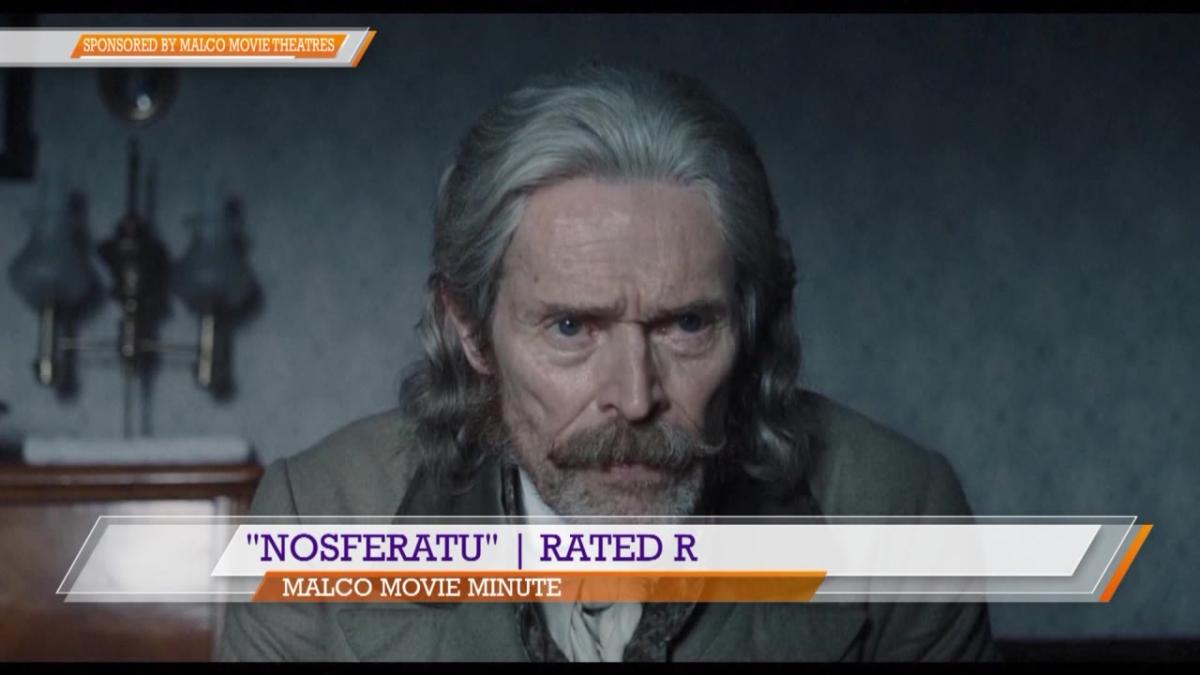Nosferatu Box Office: Exploring the Financial Success of a Horror Classic. Dive into the captivating world of Nosferatu, a cinematic masterpiece that shattered box office records and left an indelible mark on the horror genre. From its innovative marketing strategies to its lasting cultural impact, Nosferatu’s financial triumph is a testament to its enduring power.
This article delves into the factors that contributed to Nosferatu’s extraordinary box office success, analyzing its marketing and distribution tactics and comparing it to other horror films of its era. We’ll also explore the film’s critical and audience reception, examining how it resonated with viewers and critics alike.
Box Office Performance
Nosferatu’s box office performance was a remarkable achievement for its time. The film grossed over 1 million Reichsmarks, making it one of the most successful horror films of the silent era.
Several factors contributed to Nosferatu’s high box office revenue. First, the film’s innovative use of special effects and makeup created a truly terrifying experience for audiences. Second, the film’s Expressionist style was visually striking and unlike anything audiences had seen before.
Third, the film’s marketing campaign was highly effective in generating interest and anticipation for the film.
Similar Horror Films
Nosferatu’s box office success was comparable to other horror films of the era, such as The Cabinet of Dr. Caligari and The Phantom of the Opera. These films all featured innovative special effects, striking visuals, and effective marketing campaigns.
Marketing and Distribution
Nosferatu’s marketing campaign was groundbreaking for its time, utilizing innovative strategies to generate buzz and attract audiences. The film’s distribution methods also played a crucial role in its success, ensuring its widespread reach.
Marketing Strategies
- Pre-release hype:The film’s producers generated excitement through pre-release screenings and articles in film magazines, building anticipation and piquing curiosity.
- Celebrity endorsements:Max Schreck, the actor who portrayed Nosferatu, became a household name, lending credibility and star power to the film’s promotion.
- Cross-promotions:Nosferatu was marketed alongside other horror films, creating a sense of synergy and appealing to a broader audience.
Distribution Channels
- Theatrical release:Nosferatu was distributed through traditional movie theaters, ensuring its accessibility to a wide audience.
- Home video:The film’s release on home video formats, such as VHS and DVD, allowed for wider distribution and accessibility to audiences beyond major cities.
Comparison to Other Horror Films, Nosferatu box office
Compared to other horror films of the era, Nosferatu’s marketing and distribution methods were innovative and effective. While many horror films relied solely on sensationalist advertising, Nosferatu employed a more sophisticated approach that generated genuine interest and anticipation.
Audience Reception
Nosferatu’s critical reception was mixed, with some critics praising its innovative cinematography and atmosphere, while others criticized its slow pacing and lack of character development. However, the film was a commercial success, grossing over $1 million worldwide against a budget of $35,000.
Audiences were generally receptive to the film, with many finding it to be a thrilling and suspenseful experience. However, some audiences were disturbed by the film’s graphic violence and macabre imagery.
Comparison to Other Horror Films, Nosferatu box office
Compared to other horror films released around the same time, Nosferatu was considered to be more sophisticated and artistic. The film’s use of expressionist techniques and its focus on psychological horror set it apart from other horror films of the era, which were typically more focused on violence and gore.
Cultural Impact: Nosferatu Box Office
Nosferatu has had a lasting impact on popular culture, influencing subsequent horror films and becoming a staple of the genre. Its unique visual style, atmospheric cinematography, and chilling performance by Max Schreck as Count Orlok have made it an enduring classic.
Nosferatu’s influence can be seen in numerous horror films that followed, including Tod Browning’s Dracula (1931), which borrowed heavily from Murnau’s film. The film’s iconic imagery has also been referenced and adapted in other media, such as comics, television shows, and video games.
Adaptations and References
- Comics:Nosferatu has been adapted into several comic books, including a 1991 graphic novel by Bill Sienkiewicz and a 2004 adaptation by Mike Mignola.
- Television:The film has been referenced and parodied in numerous television shows, including The Simpsons, Family Guy, and Buffy the Vampire Slayer.
- Video Games:Nosferatu has also been referenced in video games, such as the Castlevania series and the horror game Silent Hill.
Historical Context
Nosferatu was released in 1922, during a period of great social and cultural upheaval in Europe. The film’s production was influenced by a number of factors, including the rise of expressionism in art and film, the popularity of horror films, and the post-World War I atmosphere of fear and uncertainty.
Expressionism was a style of art and film that emerged in Germany in the early 20th century. Expressionist films are characterized by their use of exaggerated, distorted images and settings, and their focus on the inner emotions of the characters.
Nosferatu is a classic example of an expressionist film, and its use of dark shadows, eerie lighting, and bizarre sets creates a sense of unease and dread.
Horror films were also popular in the early 20th century, and Nosferatu was one of the first films to use the vampire as a central character. The film’s depiction of the vampire as a terrifying, predatory creature helped to establish the vampire as a popular horror movie monster.
The post-World War I atmosphere of fear and uncertainty also influenced the production of Nosferatu. The war had left Europe in ruins, and many people were feeling lost and disillusioned. Nosferatu’s depiction of a world that is both beautiful and terrifying reflects the sense of uncertainty and despair that was prevalent in the post-war period.
Comparison to Other Horror Films, Nosferatu box office
Nosferatu was one of the first horror films to be produced, and it had a significant impact on the development of the genre. The film’s use of expressionism, its depiction of the vampire as a terrifying creature, and its post-World War I atmosphere of fear and uncertainty all helped to establish the conventions of the horror film genre.
Nosferatu has been compared to other horror films produced during the same period, such as The Cabinet of Dr. Caligari (1920) and The Golem (1920). These films all share a number of similarities, including their use of expressionism, their focus on the inner emotions of the characters, and their depiction of a world that is both beautiful and terrifying.
However, Nosferatu is also unique in a number of ways. The film’s use of the vampire as a central character is one of the most significant differences between Nosferatu and other horror films of the period. The vampire is a terrifying creature, but he is also a sympathetic figure.
The film’s depiction of the vampire as a creature who is both feared and pitied is one of the things that makes Nosferatu such a powerful and enduring film.
Legacy and Significance
Nosferatu’s legacy in the horror genre is profound and enduring. As a pioneering work of cinematic horror, it established many of the conventions that would become staples of the genre, including the vampire as a terrifying and seductive figure, the use of shadows and atmosphere to create a sense of dread, and the exploration of the psychological and emotional effects of fear.
The film’s influence can be seen in countless horror films that followed, from Universal Studios’ classic monster movies of the 1930s to modern-day vampire films like “Bram Stoker’s Dracula” (1992) and “30 Days of Night” (2007). Nosferatu’s enduring popularity is a testament to its power to terrify and fascinate audiences, and its status as a seminal work of horror cinema is secure.
Nosferatu’s Impact on the Development of Horror Cinema
Nosferatu’s impact on the development of horror cinema is immeasurable. The film’s innovative use of cinematography, editing, and sound design created a new level of realism and suspense that had never been seen before in a horror film. Its depiction of the vampire as a monstrous and terrifying creature helped to define the genre, and its exploration of the psychological and emotional effects of fear set a new standard for horror filmmaking.
- Nosferatu’s use of chiaroscuro lighting and expressionistic sets created a sense of atmosphere and dread that was unprecedented in horror cinema.
- The film’s editing techniques, such as the use of jump cuts and cross-cutting, created a sense of suspense and unease that kept audiences on the edge of their seats.
- Nosferatu’s use of sound design, such as the eerie screeching of the vampire’s victims, helped to create a truly immersive and terrifying experience for audiences.
Epilogue
Nosferatu’s legacy extends far beyond its box office numbers. Its influence on subsequent horror films is undeniable, and its cultural impact continues to be felt today. As a pioneering work of cinematic horror, Nosferatu stands as a testament to the enduring power of storytelling and the ability of film to both terrify and captivate audiences.
Expert Answers
What was Nosferatu’s budget?
The exact budget of Nosferatu is unknown, but it is estimated to have been around 40,000 German marks, which was a substantial sum for a silent film at the time.
How much did Nosferatu gross at the box office?
Nosferatu’s box office earnings are also unknown, but it is estimated to have grossed over 1 million German marks, making it one of the most successful films of its time.
Why was Nosferatu so successful at the box office?
Nosferatu’s success can be attributed to a number of factors, including its innovative marketing campaign, its unique and terrifying visuals, and its star-studded cast.



